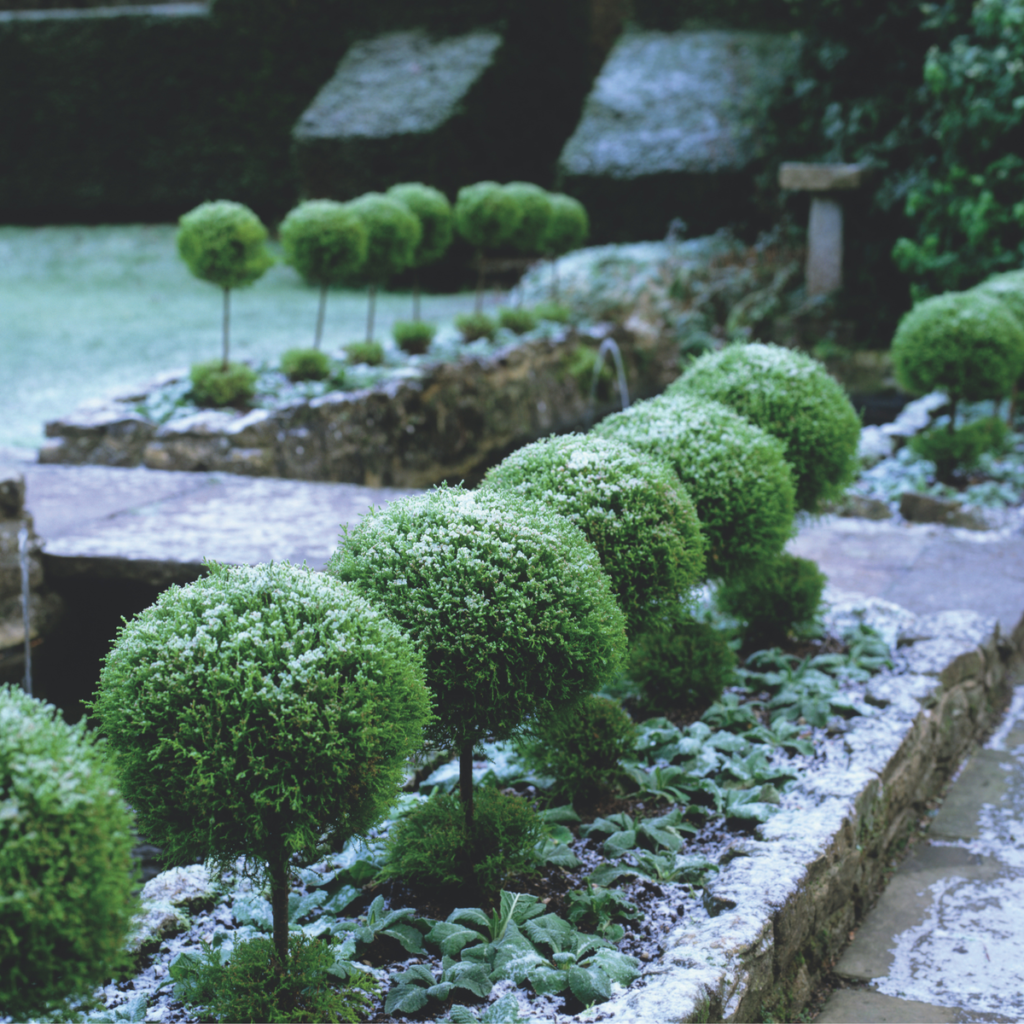It’s November, and there’s one question that we’re all wondering: when is the first frost in my area?
Well, it isn’t a one-answer-fits-all kind of question. Weather patterns vary across the UK, so temperatures will plummet at different times from one region to the next. If you want to get your garden ready for winter on time, you’ll need to make sure you learn how to protect plants from frost before temperatures fall below 0°C.
Luckily, there are ways to predict when the first frost will be in your area. We checked in with garden experts to find out how.
When is the first frost in my area?
Even though there isn’t a set date for the first frost in every region, weather experts usually predict a timeframe based on forecasts and data from previous years.
‘While it’s tough to pinpoint an exact date, historical weather data and long-range forecasts can give a general timeframe for when the first frost might arrive in your area,’ says Tom Clamp from Doff, a manufacturer of premium garden care products.
Usually, the region you live in will indicate how early the first frost will arrive.
‘The timing and intensity of the first frost differ across the UK,’ says Tom. ‘Higher-altitude and northern regions usually experience earlier and more intense frosts, while coastal areas, with their milder climates, tend to see frost later.’
Weather forecasts are brilliant indicators, offering frost warning a few days ahead of a predicted frost. Tom recommends the following weather apps and websites:
- Met Office: The official UK weather service, known for its accurate forecasts and warnings.
- BBC Weather: Provides detailed local weather information and reliable forecasts.
- AccuWeather: Offers highly localised forecasts and alerts, including frost warnings.
There are also a number of first frost maps on the internet which offer predictions based on region, like PlantMaps.
There are a few caveats, though. ‘It’s important to know if you are in a microclimate or even if there are lower areas or pockets in your garden, because frosts may occur earlier in those areas,’ says Morris Hankinson, managing director of Hopes Grove Nurseries. ‘Much of the UK, however, will see frosts from November into December.’
Morris also recommends Farmers’ Almanac. ‘This has a wealth of information centred around historical data. It is based on trends rather than exact information, but can be used as a guideline along with weather apps.’
Whichever part of the UK you live in, the first frosts are just around the corner, with freezing temperatures expected in many regions in the coming weeks – so make sure you learn how to protect plants with mulch and other frost protection methods as quickly as you can to ensure your garden has everything it needs to survive the colder weather.
Frost protection essentials
Strulch Mineralised Straw Mulch 100L
Perfect for mulching around plants in pots and borders to protect the roots from frost and enrich the soil.
Heavyweight Garden Fleece
Heavy duty horticultural fleece to wrap pots and plants against the cold weather ahead.
Hydrogarden Plant Fleece Jacket
Handy frost jackets with a drawstring stopper and zip to protect plants from the frost.
FAQs
How do you know when frost is coming?
Besides looking at the weather forecast, there are some signs that a frost is on the horizon.
‘There are a few telltale signs to watch for,’ says Tom from Doff. ‘If nighttime temperatures are predicted to drop between 0°C and 4°C, with clear skies and little to no wind, it’s quite likely you’ll wake up to frost.’
When should I start protecting my plants from frost?
Ideally, you’ll want to take steps to protect your plants from frost before the first frost arrives. Invest in one of the best plant covers for winter or a bag of quality mulch to insulate your plants before temperatures drop.
If you’re on a budget, some household items can be repurposed as makeshift wrap – like if you’re wondering whether you can protect plants from frost with bubble wrap, for example.
Keep an eye on those weather apps and get some frost protection in place before the frosty weather arrives.
Read the full article here
